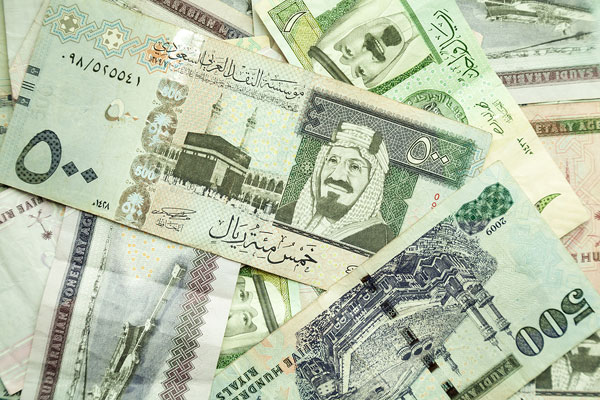
Reforms, higher oil set to help Saudi trade balance
RIYADH, January 12, 2017
Ongoing fiscal reforms and higher oil prices could bring Saudi Arabia's current account deficit nearer to balance over the coming years as the external breakeven oil price hovers around $60/barrel, a report said.
The drop in SAR Fx forward points reflects this but capital outflows and fiscal slippage remain risks, said the Bank of America Merrill Lynch’s Emerging Insight report.
The balance of payments (BoP) data for the kingdom suggests financial outflows are continuing, likely reflecting private sector hedging and official outward flows, the report said.
Methodological compilation issues mean the size of such outflows may be difficult to ascertain accurately. Within
the official sector, the outward investment mandate of the Public Investment Fund (PIF) needs to be carefully managed in order not to pressure reserves.
If outflows persist, authorities may consider resorting to administrative measures as the commitment to an open capital account is central to attracting foreign investment under the economic reform programme, said the report prepared by Bank of America Merrill Lynch Mena economist Jean-Michel Saliba and the bank’s GEM Fixed Income Strategy & Global Economics research team.
Fiscal discipline over the first nine months of 2016 has helped narrow the current account deficit. The current
account deficit stood at 5.2 per cent of GDP over the period, compared to 8.7 per cent of GDP in 2015.
Furthermore, the current account balance recorded a small surplus of $2.1 billion in the third quarter of 2016,
while the trailing current account deficit stood at $46.7 billion (7.6 per cent of GDP).
Government fiscal consolidation has been the main driver of external balances, alongside oil prices. The quarterly trade surplus improved in 3Q16, standing at $19.5 billion (oil prices of $45.8/bbl), compared to a low of $3.3 billion in 1Q16 (oil prices of $34.5bbl). Quarterly imports compressed materially, plunging by 32 per cent year-on-year to $25 billion, down from a quarterly peak of $40 billion. The invisibles balance has also improved, largely on the back of lower government payments for goods and services and stabilization in outward remittances.
Non-oil sector recession
Narrowing of the current account deficit mirrors the sharp slowdown in non-hydrocarbon sector activity over recent quarters. The non-oil economy was in recession over 9m16 as real non-hydrocarbon GDP growth contracted by 0.3 per cent YoY, from 3.2 per cent YOY in 2015. This was largely driven by contraction in the non-oil government sector, as the non-oil private sector maintained a marginally positive real growth rate, said the report.
Oil prices approaching external breakeven levels
With the external breakeven oil price around $60/bbl, higher oil prices and ongoing fiscal reforms are likely to drive the current account nearer to balance over the medium term. Stabilization in real terms of government spending suggests that imports are likely to rebound. Even if crude oil production cuts are fully reflected into exports, the higher oil price compared to September levels more than fully compensates for this.
While the market is focused on the fiscal outlook, this should not obscure the other challenge facing authorities, which is to tame the capital outflows. This situation is relatively peculiar for the Saudi authorities. Historically, Saudi current account surpluses were associated with financial account deficits as sterilization of oil export receipts translated into acquisition of foreign assets.
"Our breakdown of the net International Investment Position (IIP) shows large holdings of foreign assets by the semigovernment and private sector. The repatriation of Fx assets by government entities, part of which is managed by Sama off-balance sheet, minimized Fx reserves loss," said the report.
Financial flows were the largest driver of Fx reserve loss in 9m16. Adjusting for the issuance of a $10 billion sovereign syndicated loan, the pace of financial outflows in 9m16 would have picked up over the same period of 2015. While the financial account gap augmented by net errors and omissions stood at $36 billion in 9m16, the current account deficit stood at $25 billion over the same period. This compares unfavourably to 2015, where the drain from both sources was roughly matched at $57 billion, it said. - TradeArabia News Service







